Kraków 2024-09-18
Electric Multiple Unit EN71.
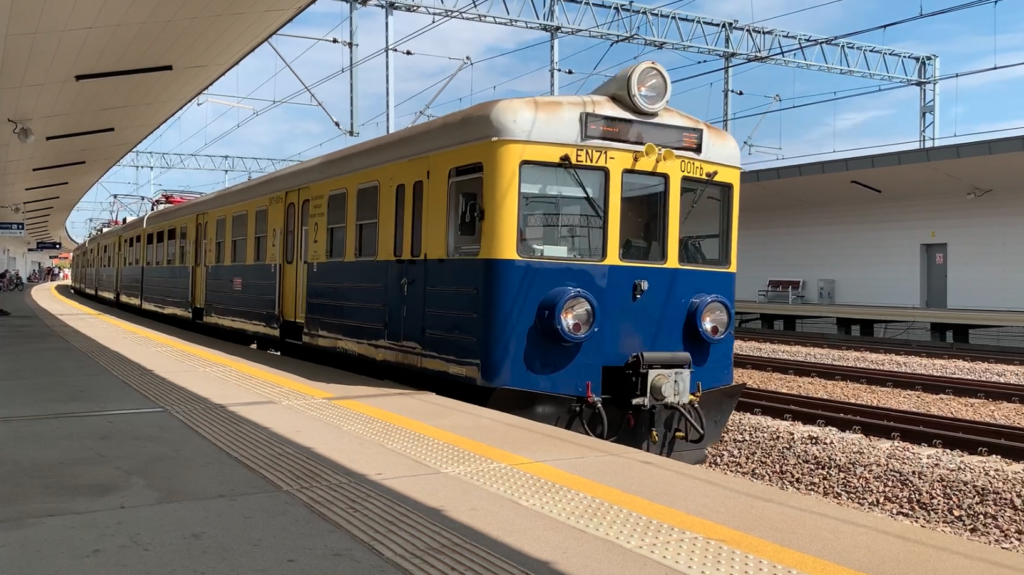
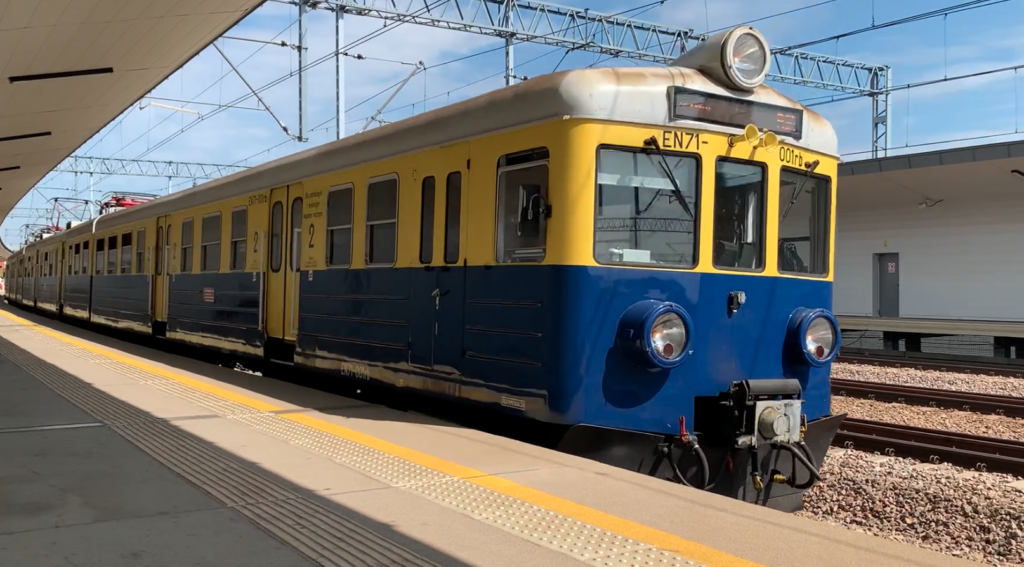
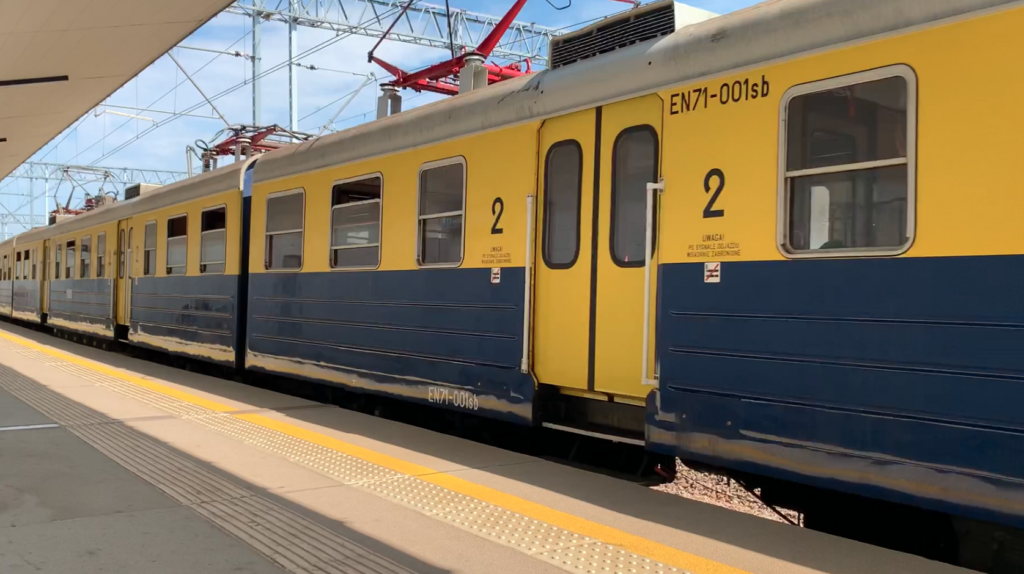
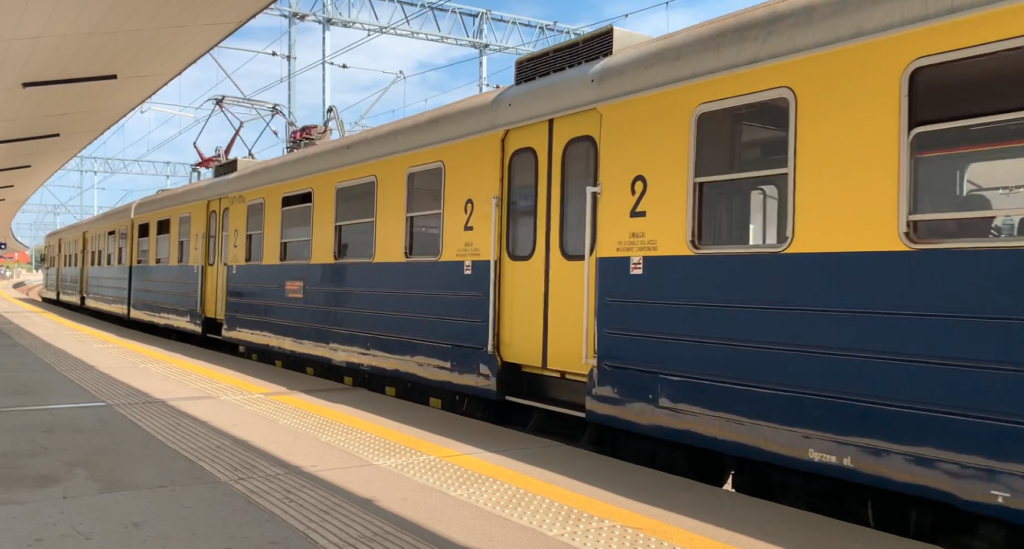
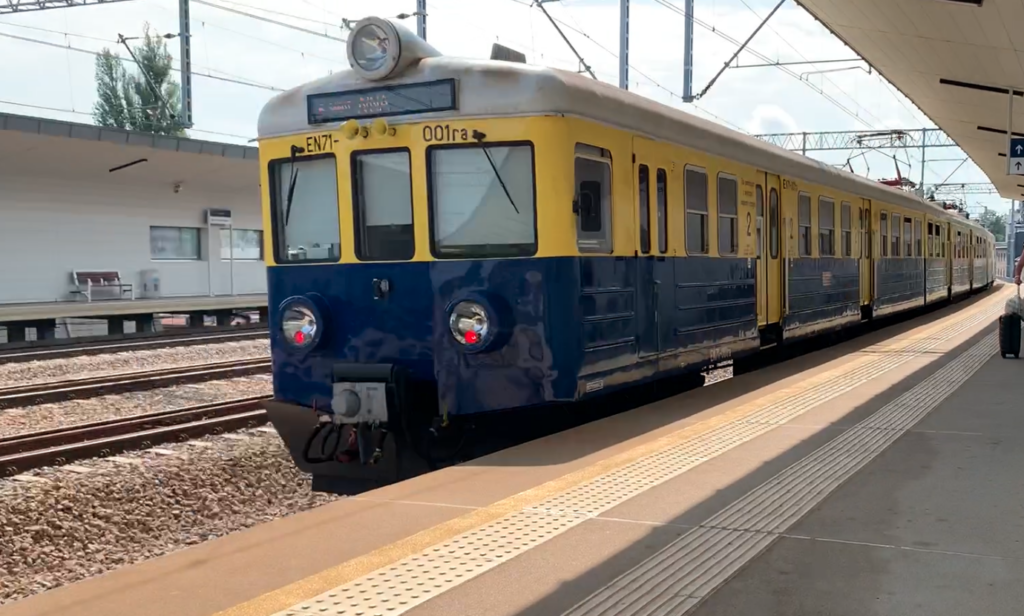
The EN57 Electric Multiple Unit is a legend of Polish tracks, and the EN71 EZT is the next version of this train. The prototype EN57 train set made its first run in December 1961. Production was placed in Wrocław at the “PaFaWag” factory. At the “PaFaWag” factory, the engine cars were designated type 6B, and the control and shunting cars were type 5B. The EN57 EZT trains were produced from January 1962 to July 1993, i.e. for 31 years. The EN57 train set was the longest-produced rail vehicle in the world. In 2021, it was 60 years since the first train, an electric unit, was built. A total of 1,429 units were built. Other sources indicate 1,452 units, including exports to Yugoslavia and four-carriage versions.
Based on the EZT EN57 train, the “PaFaWag” factory also built four-car units with an additional engine unit, which were designated EZT EN71. The first such train was built in 1964. In 1965, Yugoslavia bought trains of this type. Apparently, in Yugoslavia, the trains were called “Gomułka” after Władysław Gomułka (the first secretary of the PZPR), during whose time the trains were sent to the Balkans. Four-car trains were also built for long-distance traffic, which were designated ED72 and ED73. EW58 was built for suburban traffic. EW60 trains were built for the Tri-City railways.
Railway line No. 99 to Zakopane was electrified (3 kV DC) on December 3, 1975. The first runs made by EZT EN57, on a difficult mountain route, showed that the train had insufficient power of electric motors. The simplest solution was to insert an additional engine car into the EN57 set. The new train marked EN71 takes more passengers, has more power and better driving characteristics. The EN71 for PKP was built in 1976. Production of the next trains started in 1981. During production, the following types of cars were used: type 5Bh+6Bh+6Bh+5Bh, type 5B+6B+6B+5B and type 5Bg+6Bg+6Bg+5Bg. In 1976, 20 EZT EN71 sets were produced for PKP by PaFaWag Wrocław. In the following years, 31 EZT EN71 were created by assembling individual units in ZNTK in various railway directorates. In the following years, wagons that had returned to Poland from the countries of former Yugoslavia were also used. Since the conversion of EN57 trains into EN71 is very simple, many modified EZTs were created in the following years.
T-T PaFaWag EN71 data:
Wagon layout; shunt + engine + engine + shunt. Axle layout; 2’2’+Bo’Bo’+Bo’Bo’+2’2′. Service weight 182,000 kg. Length 86.84 m. Width 2.88 m. Height 3.72 m. Drive wheel diameter 1.00 m. Rolling wheel diameter 0.94 m. Power supply 3 kV DC. Oerlikon type braking system.
Due to the many years of operation, the EN71 EZT trains have different engines. Classic LKf-450 (8 x 145 kW) engines with continuous power of 1,160 kW or LKa-470 (8 x 175 kW) with continuous power of 1,400 kW. Or asynchronous motors with a power of 8 x 250 kW, continuous power of 2,000 kW. The EN71 EZT uses resistance starting.
Design speed 110 km/h (acceleration 0.6 m/s2), and with asynchronous motors 120 km/h (acceleration 1.4 m/s2).
The entrance doors have an entrance threshold at a height of 1.15 m from the rail head. The train has 264 seats. The train takes up to 888 passengers with a capacity of 5 people per square meter.
The cars are connected to each other with a short “factory” coupler and there is a passage for passengers and train staff. Scharfenberg automatic couplers are installed at the fronts of the EZT, which allow the units to be connected into trains for multiple travel. EN71 can be combined with EN57 and ED72.
The underframe of the wagons is made of steel profiles connected by welding. The endframes are made as closed profiles of high strength. The sides of the wagons in the first sets are grooved. From train No. 21, the sides of the wagons were made smooth. You can find EZTs where some of the wagons have grooved sides and some have smooth sides. The interior of the wagons is identical to the EZT EN57.
Each of the end cars is based on two rolling bogies with a wheelbase of 2.70 m. The wheels of the rolling bogies are made of St65P steel, they have a diameter of 0.94 m. Each of the middle cars is based on two driving bogies with a wheelbase of 2.70 m. The diameter of the wheels is 1.00 m. The bogies have hydraulic shock absorbers, leaf springs and coil springs. Each EZT EN71 has four current collectors, two on the middle cars. During the ride, the train has the second and fourth collectors raised, looking in the direction of travel.
EZT EN71-001.
It was built in 1976, in PaFaWag. From June 15, 1976, it began service in the Sucha Beskidzka locomotive depot. In 1997, the train was transferred to the locomotive depot in Kraków. In 2001, the train was transferred from PKP to the carrier Przewozy Regionalne Kraków. In 2005, the train was repainted from the traditional yellow and blue colors to blue and yellow. In 2010, the train was transferred to Przewozy Regionalne Kielce (Świętokrzyski ZPR in Kielce). At the same time, the train was repainted: silver and red. The train ran in these colors until 2020. In May 2011, the train returned to the carrier Przewozy Regionalne Kraków (Małopolski ZPR in Kraków). In 2016, the train was repainted in orange, red and navy blue. Unfortunately, vandals got hold of the train and the car bodies on the sides were disfigured with vulgar graphics. The railway workers removed the pseudo-works with great difficulty. But the train did not look attractive. There were no funds for a new paint job. On May 22, 2022, the EZT EN71 train made its last farewell run, which was a special cruise. The train traveled the Sucha Beskidzka – Żywiec route and in the opposite direction. The certificate of admission to operation ended in June 2022.
In 2024, it was decided to carry out a renovation of the train at the P4/5 level and restore the original colors; yellow and navy blue with a gray roof. The renovation was carried out at the PESA Minsk Mazowiecki plant and was completed in April 2024. The train returned to service in May 2024.
Written by Karol Placha Hetman
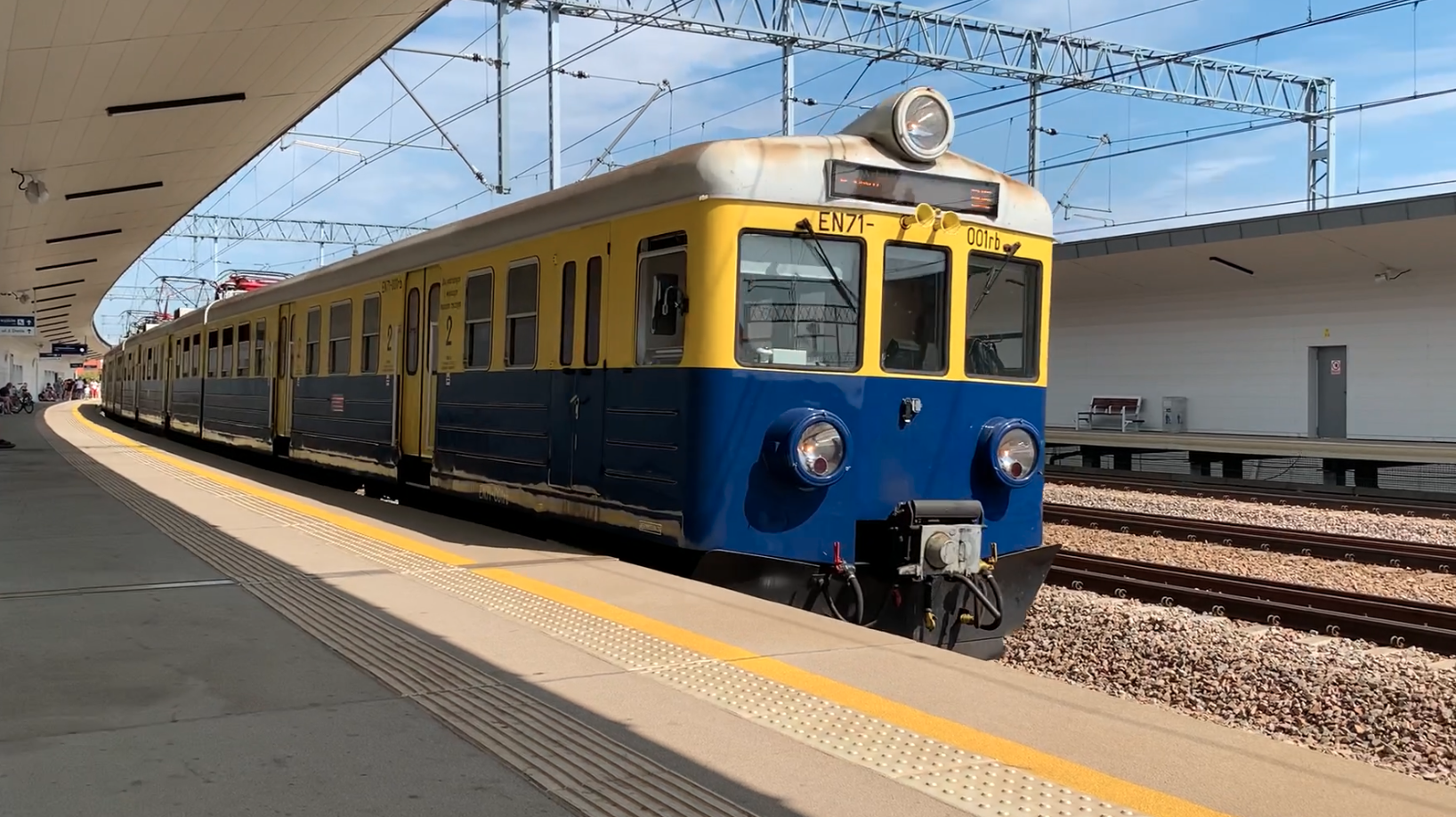
Leave a Reply
You must be logged in to post a comment.